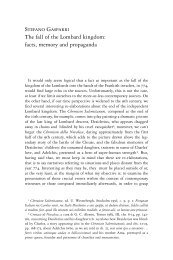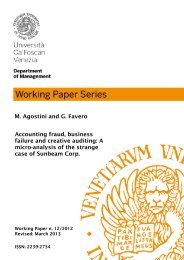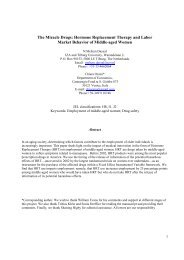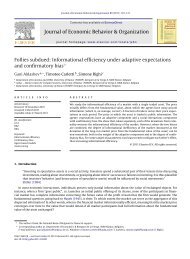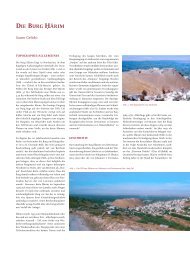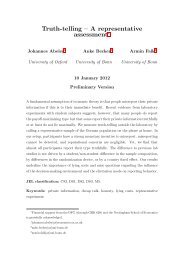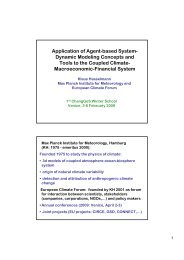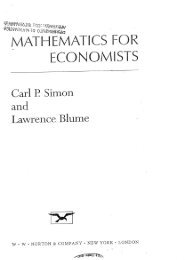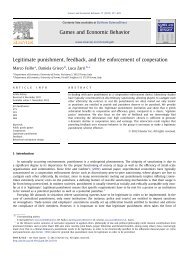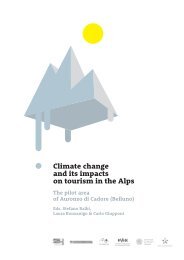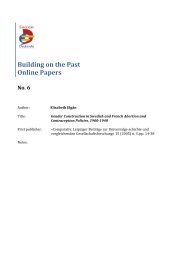DEREGULATED WHOLESALE ELECTRICITY PRICES IN EUROPE
DEREGULATED WHOLESALE ELECTRICITY PRICES IN EUROPE
DEREGULATED WHOLESALE ELECTRICITY PRICES IN EUROPE
Create successful ePaper yourself
Turn your PDF publications into a flip-book with our unique Google optimized e-Paper software.
0.04<br />
0.03<br />
0.02<br />
<strong>DEREGULATED</strong> <strong>WHOLESALE</strong> <strong>ELECTRICITY</strong> <strong>PRICES</strong> <strong>IN</strong> <strong>EUROPE</strong> 23<br />
APX<br />
EXAA<br />
EEX<br />
Powernext<br />
0 5 10 15 20 25 30<br />
Weeks<br />
Figure 5. Generalized impulse response functions of<br />
the electricity prices to a positive shock in oil prices.<br />
with yt vector of weekly median electricity prices, xt Euro-Brent prices<br />
time series, α and β vector of regression coefficients and εt vector I(0)<br />
process. The system was estimated using the generalized method of<br />
moments (GMM) with Newey-West HAC covariance matrix estimator,<br />
and the strong integration hypothesis was tested by means of a Wald<br />
type statistic. Again, the strong integration hypothesis could not be<br />
rejected at any usual level of significance (p =0.13).<br />
An even stronger form of market integration holds if: i) strong integration<br />
holds and ii) all the long run ratios of electricity prices of<br />
different markets equal one. De Vany and Walls (1999) call this perfect<br />
integration of the electricity markets. This assumption holds if all<br />
the elements of α in system (4) are equal. The hypothesis of perfect<br />
integration was tested using, again, a Wald type statistic, but the null<br />
was strongly rejected. Indeed, the long run energy price level tends to<br />
be higher in the APX market, than in EXAA, than in EEX, than in<br />
Powernext (this being the actual ranking).<br />
5. Concluding comments<br />
This paper analyses for the first time the interdependency existing<br />
in the dynamics of prices formed in four major European electricity<br />
markets (Germany, France, Austria, Netherlands). We conducted a<br />
multivariate dynamic analysis of weekly median prices and our results<br />
question the most commonly reported finding of mean reversion and,<br />
implicitly, of no integration of European prices. On the contrary, our<br />
tests indicated the presence of strong integration (but not perfect integration)<br />
among the four markets and the existence of a common<br />
trend among electricity prices. This means that there are no long-run<br />
arbitrage opportunities We found that this common trend is in turn<br />
cointegrated with the oil price. The latter result appears to be relevant<br />
also in the context of the discussion of efficient hedging instruments to<br />
be used by medium-long term investors.




